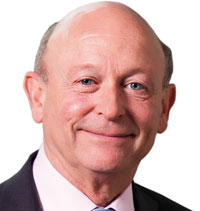Hot Topic - Helping doctors to keep children and young people safe
Post date: 01/02/2014 | Time to read article: 2 minsThe information within this article was correct at the time of publishing. Last updated 18/05/2020
 Protecting children is something that we all must play a part in, writes Professor Sir Peter Rubin
Protecting children is something that we all must play a part in, writes Professor Sir Peter Rubin
Child protection is a difficult area of practice, complicated by uncertainty and emotional challenges. As such, it’s understandable for those doctors who aren’t paediatricians to breathe a sigh of relief that it’s not something they need to worry about unduly. But, if it’s a principle we all believe in, it’s also one we must all – whether we work directly with children or not – play a part in ensuring. That’s why the GMC provides detailed guidance, available on our website, aiming to provide clarity and reassurance to doctors navigating this complex landscape. We know from our Regional Liaison Service, which works with doctors at a local level, that doctors are keen to discuss this area of practice, to understand their responsibilities – and how to apply them.
The guidance makes it clear that all doctors, whatever their specialty, have a duty to raise concerns if they think that a child or young person may be at risk of serious harm. This also applies if the concerns are about an adult patient they feel may be at risk of harming or neglecting children, for example someone with a chaotic or dysfunctional lifestyle.
Even if a doctor has minor concerns, they should be aware that what might, on its own, seem too small to trigger an investigation, could be part of a wider picture. That picture may only become clear when a number of people share apparently minor worries. You must act on any concerns you have about a child or young person who may be at risk of, or suffering, abuse and neglect. If in doubt you should ask advice from a named or designated professional or a lead clinician or, if they are not available, an experienced colleague.
"Even if a doctor has minor concerns, they should be aware that what might, on its own, seem too small to trigger an investigation, could be part of a wider picture"
Linked to this, the guidance re-emphasises the role of good communication, and working in partnership in this area – as in all areas of practice. Appropriate information sharing is at the heart of child protection, but it can be hard to know who to speak to, and how to balance the duty to report concerns and the duty to preserve patient confidentiality.
The guidance offers examples of who to contact, sets out what types of information should be disclosed, deals with the issue of seeking consent, and highlights the tests that need to be applied if you’re considering sharing information without consent. Even if you don’t have any current concerns, it’s worth getting to know who to call should the need arise.
Finally, and crucially, it aims to reassure doctors that taking action will be justified, even if their concerns turn out to be unfounded, provided that they are honestly held, reasonable and pursued through appropriate channels. We’re aware that some high-profile child protection cases have caused concern, leading doctors to voice what are understandable worries over what happens if cases are dismissed, or if they in turn get reported under fitness to practise regulations. So we want to be clear on this: if a doctor follows our guidance, and acts in good faith, they can rely on that fact, and on our support.
Child protection is complex. It’s challenging. But it’s something we can all play a part in promoting. Our guidance aims to help all doctors do just that.
For more information visit the GMC website.


